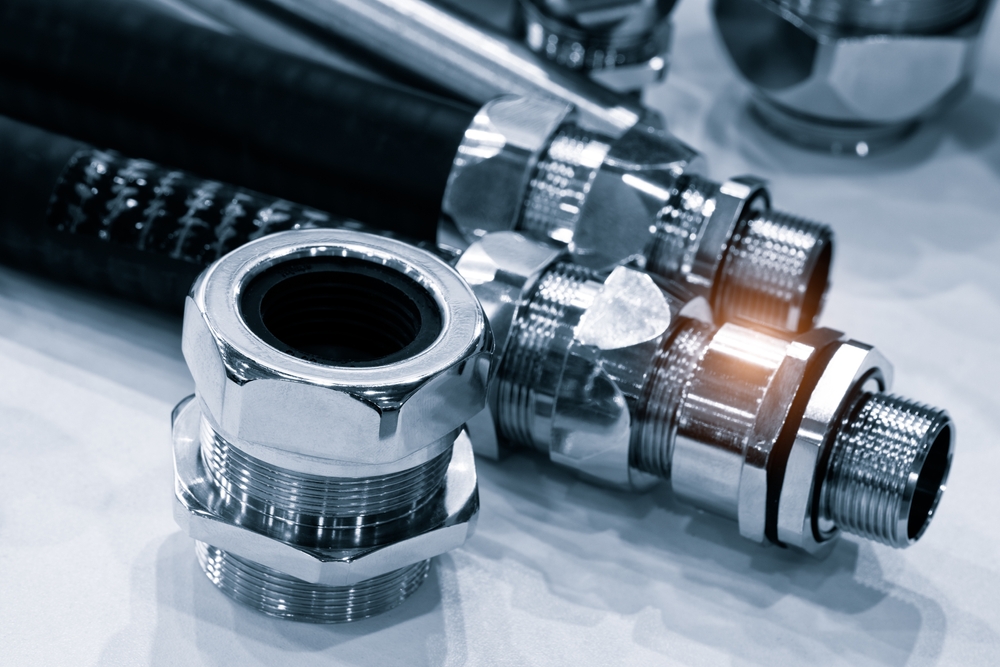
5 Signs Your Hydraulic Hose Needs Replaced
Hydraulic hoses are critical components in many industrial and mechanical systems, responsible for transferring fluid between hydraulic components like pumps, cylinders, and valves. These hoses are built to withstand significant pressure, but over time, they can deteriorate, leading to failures that can disrupt operations and even pose safety risks. Recognizing the signs that your hydraulic hose needs replacement can save time, money, and prevent accidents.
In this blog, we will explore five key signs that indicate your hydraulic hose may need to be replaced and offer tips on how to avoid unexpected failures.
Cracks and Abrasions on the Hose Surface
One of the most obvious signs that a replacement hydraulic hose is needed is visible cracks or abrasions on the outer surface of the hose. Hydraulic hoses are exposed to harsh environments, including extreme temperatures, chemicals, and physical contact with machinery. Over time, these conditions can wear down the outer layer, leaving the inner structure vulnerable to failure.
Why Cracks and Abrasions Matter
When cracks appear on the hose’s surface, it indicates that the material is starting to break down. These cracks can allow hydraulic fluid to escape, reducing system efficiency and potentially causing damage to other components. Abrasions, on the other hand, are often caused by friction between the hose and surrounding machinery or surfaces. Left unchecked, abrasions can lead to the complete rupture of the hose, resulting in costly downtime and repairs.
How to Prevent Cracking and Abrasions
Regular inspections are key to preventing hydraulic hose failure due to surface damage. By routinely checking your hoses for signs of wear, you can spot potential issues before they become major problems. Additionally, using protective coverings or repositioning hoses to avoid contact with sharp edges can extend their lifespan.
Leaks and Fluid Contamination
Another major indicator that it’s time for a hydraulic hose replacement is the presence of leaks or fluid contamination. Hydraulic systems rely on clean, uncontaminated fluid to function properly. When a hose begins to fail, it can leak hydraulic fluid, leading to decreased system performance and the risk of contamination.
Signs of Leaks
Leaks can manifest in several ways, including visible puddles of fluid beneath equipment, decreased fluid levels in the system, or a loss of pressure in hydraulic lines. Even small leaks should be addressed promptly, as they can quickly worsen and lead to more significant failures.
Fluid Contamination
Fluid contamination can occur when dirt, debris, or other foreign substances enter the hydraulic system through a compromised hose. This contamination can lead to premature wear of system components, reduced efficiency, and in severe cases, complete system failure.
What to Do About Leaks and Contamination
If you notice any signs of a leak or suspect fluid contamination, it’s essential to replace the hydraulic hose immediately. Continuing to operate with a damaged hose can lead to further damage to your equipment, resulting in more expensive repairs.
Flattened or Twisted Hose Sections
Hydraulic hoses are designed to maintain their shape and flexibility under pressure. However, if you notice that certain sections of your hose have become flattened or twisted, it’s a clear sign that the hose may need to be replaced.
What Causes Flattening and Twisting?
Flattening and twisting of hydraulic hoses can be caused by improper installation, excessive pressure, or wear over time. When a hose becomes flattened, it can restrict the flow of hydraulic fluid, reducing system efficiency and potentially causing overheating. Twisting, on the other hand, places additional stress on the hose material, increasing the likelihood of a rupture.
The Risks of Ignoring Flattened or Twisted Hoses
Ignoring these issues can lead to a complete failure of the hose, which can be catastrophic in high-pressure systems. Additionally, flattened or twisted hoses can compromise the accuracy and efficiency of hydraulic systems, leading to poor performance and increased energy consumption.
How to Address Flattening and Twisting
To prevent flattening or twisting, ensure that your hoses are properly installed with the correct bend radius and avoid routing them through tight spaces. If you notice any signs of deformation, consider replacing the hose before it leads to a more serious problem.
Hose Stiffness or Brittleness
Over time, hydraulic hoses can lose their flexibility and become stiff or brittle. This change in the hose’s physical properties is a clear sign that a replacement hydraulic hose is needed. Stiffness and brittleness can occur due to aging, exposure to extreme temperatures, or prolonged use in demanding conditions.
Why Stiffness and Brittleness Are Dangerous
A stiff or brittle hose is much more prone to cracking or breaking under pressure. Hydraulic systems require hoses that can flex and move with the equipment, especially in dynamic applications. When a hose loses its flexibility, it can no longer perform its job effectively and is at risk of sudden failure.
How to Recognize a Stiff or Brittle Hose
Signs of stiffness or brittleness include difficulty bending the hose, cracking sounds when the hose is moved, or visible signs of material degradation. If you notice any of these symptoms, it’s time to replace the hose.
Preventing Hose Stiffness and Brittleness
To extend the life of your hydraulic hoses, ensure that they are made from materials suitable for the specific conditions they will be exposed to. Regularly inspect your hoses for signs of aging, and replace them as necessary to avoid unexpected failures.
Age and Frequent Usage
Even if a hydraulic hose appears to be in good condition, age and frequent usage can still necessitate a hydraulic hose replacement. Hydraulic hoses are not designed to last indefinitely, and over time, the material will naturally degrade.
Understanding Hose Lifespan
The lifespan of a hydraulic hose can vary depending on factors such as the operating environment, pressure levels, and the type of fluid being used. In general, most hydraulic hoses have a lifespan of about five years, though this can vary based on usage.
The Risks of Aging Hoses
As a hose ages, it becomes more susceptible to failure, even if there are no visible signs of wear. An older hose is more likely to experience issues such as cracking, leaking, or reduced flexibility. Additionally, the internal structure of the hose can deteriorate over time, leading to reduced performance.
When to Replace an Aging Hose
If your hydraulic hose is approaching the end of its expected lifespan, it’s a good idea to replace it proactively, even if there are no visible signs of damage. This preventative maintenance can help you avoid unexpected failures and keep your equipment running smoothly.
Conclusion
Recognizing the signs that your hydraulic hose needs replacement is crucial for maintaining the safety and efficiency of your equipment. Cracks and abrasions, leaks and fluid contamination, flattened or twisted sections, stiffness or brittleness, and the hose’s age are all indicators that a replacement hydraulic hose may be necessary. By addressing these issues promptly, you can avoid costly downtime, prevent damage to your equipment, and ensure the safe operation of your hydraulic system.
Regular inspections, proper installation, and choosing the right hose for your application can help extend the life of your hydraulic hoses. However, when it’s time for a hydraulic hose replacement, acting quickly and replacing the hose before it fails is the best way to keep your system running efficiently.
Royal Brass Incorporated
Welcome Royal Brass Incorporated! We are your 3rd generation, family-owned, local hose supplier! Our family has dedicated our services to supplying northern California with all types of hoses, fittings, flanges, regulators, valves, adapters, and gauges. We pride ourselves on having the most extensive inventory in northern California. Our inventory ensures that we can fix most products on site, the same day. Here at Royal Brass Incorporated, we only hire qualified individuals who are trained in factory sales. Our fully stocked warehouses ensure that we can fill your hydraulic and pneumatic hose, tubing, and fitting needs on time, every time. High-quality customer service is our goal and has been since 1952. Stop by or contact us today!
Categorised in: Hydraulic Hose





